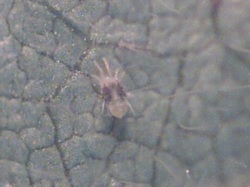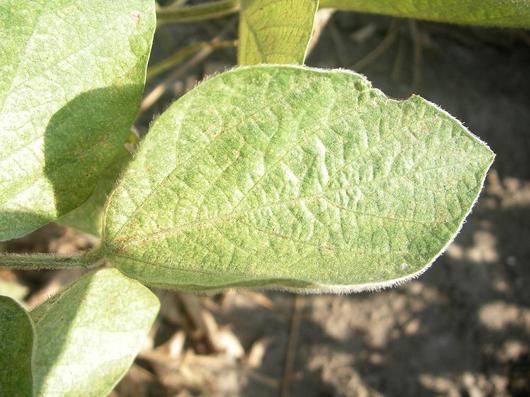
Here are a few comments on some insect observations in soybeans:
Soybean Aphids-
Aphids are present, but as of today they are at very low levels. Even the fields that have had a history of being the first infested are almost devoid of any significant numbers. The weather conditions we have been experiencing has been hard on them, but rest assured, they will show up in numbers to control in at least part of the area. Vigilance is paramount.
Your control options are the same as in past years. Some companies do offer respray protection guarantees with their products, and of course, they will cost more per acre. The product you choose should be based on the current environment though, not a manufacturer program. With the dry, hot weather the pyrethroid insecticides will not work as well since they are more easily degraded by this weather. They also are not effective on spider mites, which we may have to deal with as well.
Spider Mites-
Every time it gets hot and dry it seems that industry gets on the spider mite bandwagon. It is a worry, but again, mites are not at levels that require control - yet. I did run across a field today that I believe will need to be sprayed for mites soon. Unfortunately this field did not have any aphids, so spraying now does not guarantee no aphids in the future. This may be a case were relying on one of the manufacturer backed products may be beneficial. Spaying a pyrethroid insecticide on this field will not control the mites and will probably flare them. Choose wisely.
What do mites look like? Well, the mite itself is very small. A good magnifying glass or microscope is needed to see them. This picture above is one I took with a microscope with a 60x lens. Leaf symptoms are a bit easier to see. Generally you will first notice symptoms on the field edges (although the field today was not) and they look like the picture below. Not the best picture, but it does show the stippling that is typical of mites.
Soybean Aphids-
Aphids are present, but as of today they are at very low levels. Even the fields that have had a history of being the first infested are almost devoid of any significant numbers. The weather conditions we have been experiencing has been hard on them, but rest assured, they will show up in numbers to control in at least part of the area. Vigilance is paramount.
Your control options are the same as in past years. Some companies do offer respray protection guarantees with their products, and of course, they will cost more per acre. The product you choose should be based on the current environment though, not a manufacturer program. With the dry, hot weather the pyrethroid insecticides will not work as well since they are more easily degraded by this weather. They also are not effective on spider mites, which we may have to deal with as well.
Spider Mites-
Every time it gets hot and dry it seems that industry gets on the spider mite bandwagon. It is a worry, but again, mites are not at levels that require control - yet. I did run across a field today that I believe will need to be sprayed for mites soon. Unfortunately this field did not have any aphids, so spraying now does not guarantee no aphids in the future. This may be a case were relying on one of the manufacturer backed products may be beneficial. Spaying a pyrethroid insecticide on this field will not control the mites and will probably flare them. Choose wisely.
What do mites look like? Well, the mite itself is very small. A good magnifying glass or microscope is needed to see them. This picture above is one I took with a microscope with a 60x lens. Leaf symptoms are a bit easier to see. Generally you will first notice symptoms on the field edges (although the field today was not) and they look like the picture below. Not the best picture, but it does show the stippling that is typical of mites.

 RSS Feed
RSS Feed
